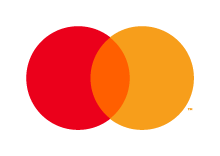Azo Dyes – What Are They?
Colour plays a huge role in textiles, food, printing, pharmaceuticals, and cosmetics. Azo dyes are popular because they’re easy to use, affordable, and produce bright, strong colours. There are around 2,000 different azo dyes on the market, making them one of the most widely used groups of dyes in modern chemistry.
Also called nepthol or azoic dyes, they’re most commonly found in shades of brown, red, and yellow. Chemically, they’re synthetic compounds built around an azo group — two nitrogen atoms joined together. The name “azo” comes from the old French word azote, meaning nitrogen.
EazyColours offers a range of azo dyes, including:
Red 28
Red 33
Ponceau 4R Granular
Amaranth
Red 40
Yellow 5
Azo dyes are synthetic colourants, most of which contain a single azo group. Their biggest advantage is versatility — they can produce nearly every colour in the spectrum. Compared to natural food dyes, they’re more consistent, stable across a wide pH range, resistant to fading from light and oxygen, and able to withstand heat without losing intensity.
Amaranth (E123) Amaranth is a synthetic anionic dye, also known as FD&C Red No. 2, Red 9, Acid Red 27, or C.I. 16185. It’s a water-soluble powder with a reddish-brown to raspberry colour.
It can be applied to natural and synthetic fibres, leather, paper, and certain resins. In cosmetics, it’s commonly used in rinse-off products like bath bombs, melt-and-pour soap, and bubble bars. In the UK and EU, Amaranth is approved as a food colourant and is often used to give glacé cherries their bright red colour. However, it has been banned as a food additive in the United States since 1976 due to health concerns raised by the FDA.
Tartrazine (Yellow 5) Tartrazine is a synthetic lemon-yellow azo dye commonly used as a food colouring. It has been linked to possible hyperactivity in children, which is why EU regulations require foods containing Tartrazine to carry the warning: “may have an adverse effect on activity and attention in children.”
In cosmetics and personal care products, it’s listed as CI 19140 or FD&C Yellow 5. This dye is a water-soluble powder and is suitable for almost all rinse-off cosmetic formulations, including bath bombs, soaps, and bubble products.
Ponceau 4R (E124) Ponceau 4R is a synthetic strawberry-red azo dye, approved in the UK and EU as food colour E124. It’s a water-soluble colourant that stays stable under light and heat but can fade in the presence of ascorbic acid (vitamin C).
It’s widely used in food products and is also suitable for most rinse-off cosmetic applications, including bath bombs, soaps, and bubble bars. EazyColours supplies Ponceau 4R in granular form, which should be dissolved in a small amount of water before use.

Discover More at AW
Discover More at AW
AW Family
AW Aromatics Ltd
Block B Parkwood Business Park, 75 Parkwood Road, Sheffield, South Yorkshire, England, S3 8AL
Company Number: 12796117
VAT: GB356317102
EORI: GB356317102000




Copyright © 2024 AW Aromatics Ltd., All rights reserved.